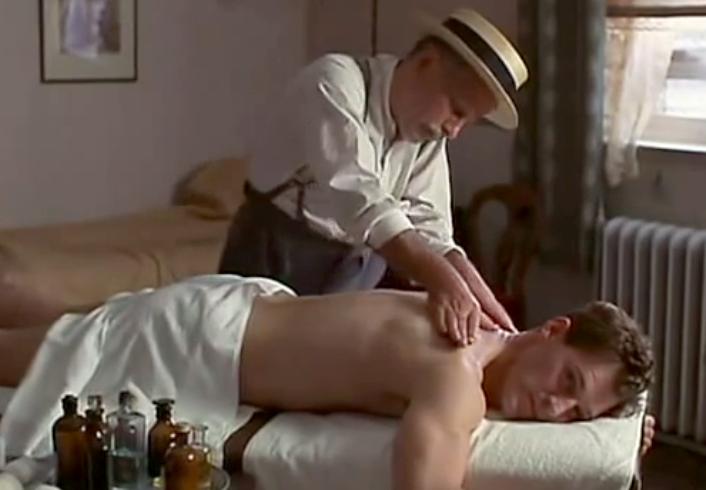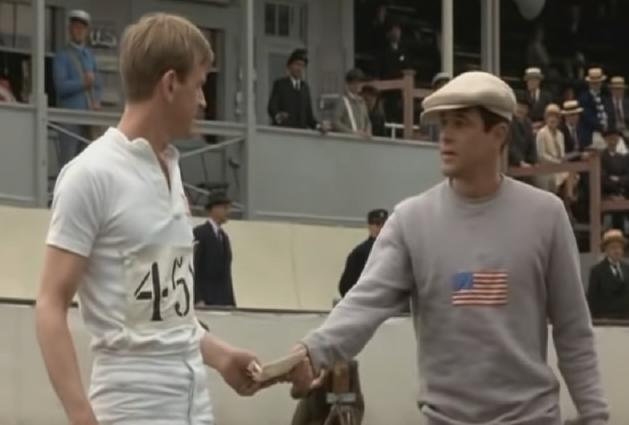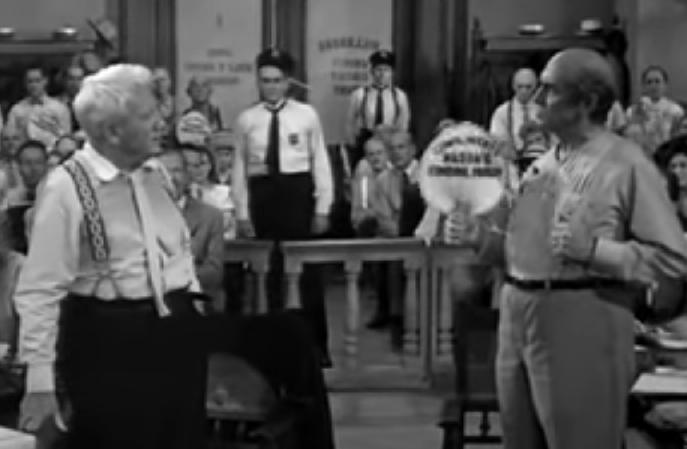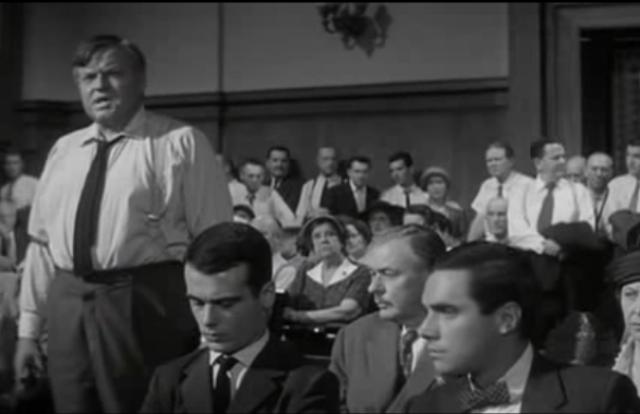DeLoggio Achievement Program
Selection of and Preparation for College and Professional Programs
Culture by Cinema
World War I and Post-War
The end of World War I left the United States and Europe facing some festering social issues, centering primarily around race, religion, sex, and labor. These films are not intended to definitively answer, or even clearly define, any of these issues; they are intended to make you aware of how the issues Inc. themselves into society.
Chariots of Fire
Ostensibly a docudrama about the Paris Olympics of 1924, “Chariots of Fire” is a story of values and culture of a generation, at least as much as the legendary “the Great Gatsby” is about the same generation.
The plot is focused on two athletes who will run for Great Britain in the 1924 Olympics. One is a Scottish missionary, the other a Jewish Cambridge student. Both were destined for greatness, and did in fact both win Olympic Gold.
But the setting of the Olympic battle is far overshadowed by the cultural story that tells us about the values and biases of an era. Every law student or person who aspires to understand the history of Europe after World War I should be familiar with this background.
The film begins with the return to Cambridge of its first full class since the beginning of World War I. While students who are soon to become athletes hold center stage, the peripheral characters show the ravages of war. (Interesting as this depiction of postwar England is, it never holds center place in the story.) A man who has to wear a plastic face, because his own was destroyed; dozens of unemployed laborers running to offer their services carrying a bag or transporting the students to their destination.
And as soon as that destination is reached, the second major theme of the film moves to center stage: anti-Semitism. Ben Cross, who plays the Olympic athlete and Cambridge student Harold Abrahams, is confronted from the minute he registers for class to the day he leaves for the Olympics four years later with remarks about his religion, some snide and some quite overt. In the scene early in the film [spoiler alert] where Ben Cross first comes to the attention of the school’s Dons, Sir John Gielgud refers to Abrahams, as “a Jew, a financier’s son from the city,” showing the extent to which Cambridge’s standards have fallen due to the poverty and decline of student population immediately following the war.
Andrew, Lord Lindsay, portrays the third element controlling the flow of the movie. The aristocracy, not nearly as impoverished as one might expect after World War I, still hold primacy of place in society. Abrahams, as gifted a runner as he may be, is still a commoner and a “Semite.”
The third major character culturally as well as historically, is Eric Lidell, the Scottish missionary who is also a runner slated as an Olympic hopeful. Lidell is used to a minor extent to portray religious differences, although the fact of Christianity versus Judaism is secondary to the automatic acceptance of the Christian to the constant fight of the Jew to maintain his place in the school and the world. But the larger role of the conflict between Abrahams and Lidell is to show the different ways in which loyalty to country conflicts with personal, cultural and religious values, and the extent to which a country asks the person to sacrifice personal values in the name of patriotism. The magnificent portrayal of the assumed supremacy of Britain, the assumed anti-Semitism, and the effortless way in which the aristocracy (in the form of Lord Lindsay) breezes into the room to solve the film’s key crisis, all present a view of an era as seen from the top down.
Eric Lidell, with American runner Jackson Schultz, who comes to wish him well for having stood by his religious beliefs.
"Chariots of Fire" takes us from the end of World War I to the inevitable beginning of World War II by setting up the central issue of the era: Judaism and anti-Semitism.
Suffragette
One of the most important lessons women learned during World War I is that bombs make men listen when polite, orderly marches don't. "Suffragette" is not only the story of the 50 year struggle for the right to vote in England, but of the escalation to violence that led to its success.
One of the tactics used by the police and Parliament to prevent women's escalating strategies from succeeding was to keep all mention of it out of the press. What isn't news isn't newsworthy. Finally, one woman decided to make a stand that the press could not ignore. King George V of England had a horse entered In the Derby at Epsom Downs. Emily Davison stands in the path of the King's horse. She is viciously trampled and dies a few days later. The local press was unable to ignore the event, especially since there was international press covering as well. It is believed that is this ultimate act of defiance that got women the right to vote in England. [Emily Davison's public protest was indeed captured on film, and can be seen on YouTube.]
While England was struggling with anti-Semitism and suffrage for women, the United States was struggling with the same three issues is struggling with now: racism, free speech, and abuses of the criminal justice system. |
Rosewood
The Rosewood massacre was real: Rosewood massacre - Wikipedia In 1923, there was an unsubstantiated report of a black drifter’s having raped a white woman in a nearby town on the western coast of the Florida peninsula. A number of white men from surrounding communities lynched a black man in Rosewood, even though he was not associated with the crime in any particular way. Violence and anger escalated until the town of Rosewood was completely obliterated.
The story’s fame doesn’t come from the event, but from the fact that newspapers at the time, participants in the event, and state legislative and police officials all denied that it happened. In the 1980s, one black survivor managed to convince some journalists that the event was real, and they literally unearthed the history along with the mass graves.
This docudrama, exploring issues of the fear of Blacks to oppose the rioting white people, is incredibly reminiscent of European Jews during the rise of Nazism, and the determination of even “good” white people to ignore the evidence of their own eyes. Rosewood (film) - Wikipedia
The film is an important representation of American history, for two reasons: it shows the extent to which killing black people was commonplace in the Jim Crow South, and it shows the extent to which revisionist history can occur even in the middle of the events that are being denied.
It’s also a crucial revelation to all the people who wonder why Blacks haven’t “made more of themselves” since the end of the Civil War; along with separate but unequal facilities and lack of realistic educational or employment options, people forget the power of tyranny and terror.
Inherit the Wind
Any list of great lawyers, great litigators, great legal minds of the 20th century would automatically be suspect if it didn’t include Clarence Darrow. I’ve sung the many praises of Clarence Darrow; his oratorical genius, his willingness to take unwinnable cases, his famed closing arguments that filled courtrooms for days and fill volumes of books long afterwards. (The celebrity-pop movie starring Kevin Spacey is so unrelated to the great legal mind that I’m actually sorry I watched it.)
"Inherit the Wind " presents one of his great trials – the Monkey Trial, officially known as The State of Tennessee v. John Thomas Scopes, in which a public school teacher was charged with violating a state law that made it illegal to teach any theory of the creation of man that conflicted with the biblical story of Genesis.
The brilliance of this docudrama is as much in the inspired cast as in its close adherence to the actual trial transcripts. Gene Kelly, famous as a song and dance man (An American in Paris, etc.), portrays H.L. Mencken, a cynical reporter for the Baltimore Sun. Fredric March portrayed William Jennings Bryan, a legendary Populist politician who ran for president three times. He did such a famous job of re-creating Bryan that the statue outside the state capitol in Omaha, Nebraska actually looks more like Fredric March then like Bryan.
And the Great Lawyer himself was portrayed by Spencer Tracy, another acting legend. His portrayal shows the breadth of oratory, from folksy intimacy to ringing melodrama. There are so many good scenes in this movie that it’s difficult to choose one, But this is a personal favorite:
The beginning of the movie seems a bit heavy-handed in its portrayal of rural ignorance, that to seems to have proven itself in recent months. Aside from the brilliance of Spencer Tracy and the importance of the case itself, one of the best moments in the film is when H.L. Mencken arrives. A woman who runs a boarding house approaches him and asks whether he needs a nice clean room. Gene Kelly responds, “I had one madam; but I left it to come here.”
From the perspective of law and society, however, the importance of this movie is that it's the turning point from isolationism and licking our wounds after World War I to the regeneration of society. Scopes v. Tennessee was the first case taken by that brand-new organization the American Civil Liberties Union (ACLU). And Clarence Darrow joined their legal team in order to advocate for the right to free speech.
Compulsion
“Compulsion” is one of the two great movies depicting this legal giant. Based on a true story, the Leopold and Loeb trial, the movie depicts not only the greatness of a lawyer who could deliver a 12 hour closing argument without losing the judge or the press for even a minute, but one of the most brilliant legal strategies possible. Knowing that if he entered an insanity plea, he would have to face a jury, he instead pleaded guilty and argued only to the judge. In doing so, he added a new standard of “mental disease” to what had previously been the only insanity defense, and one that clearly would not have worked in this case: the inability to distinguish right from wrong.
It was a daring legal maneuver, and against all speculation he succeeded in having the sentence reduced from death by hanging to life imprisonment.
Orson Welles portrays Darrow brilliantly. The oratory of this scene is archetypal of Darrow’s genius:
One sentence in this 10 minute clip demonstrates the inspiration of the strategy [Beginning at 2:33]:
"Of course I’m afraid to submit this case to a jury, where the responsibility must be divided by twelve. No, Your Honor; if these boys must hang, you must do it. It must be your own deliberate, cool, premeditated act."
Clarence Darrow, so eloquently represented by these two great actors, took the United States from the isolationism that followed World War I into a new period of liberalism. Had it not been for the stock market crash of 1929, he may well have single-handedly taken us to a more enlightened place from which we could have entered World War II.
| Copyright | Take me to Home Page |





